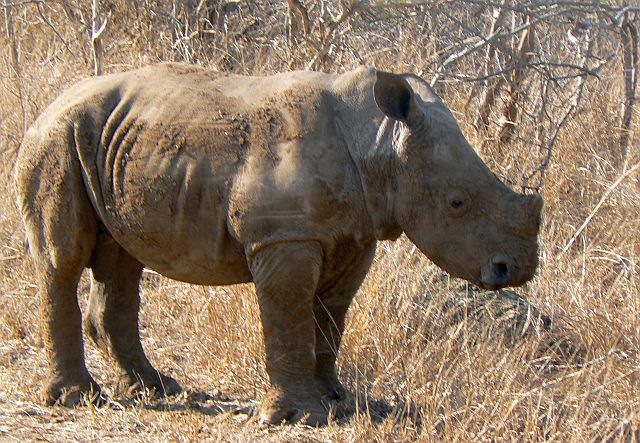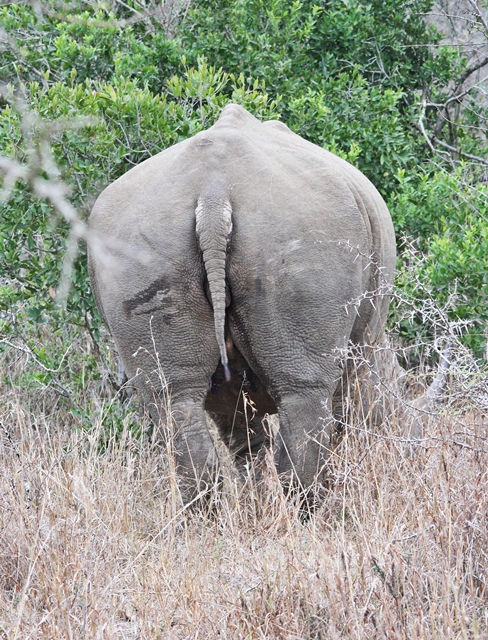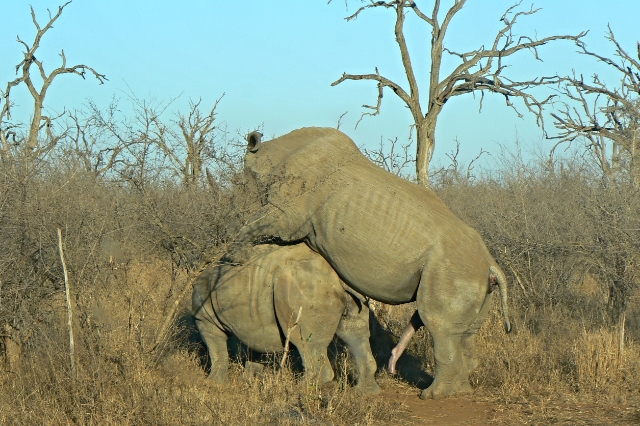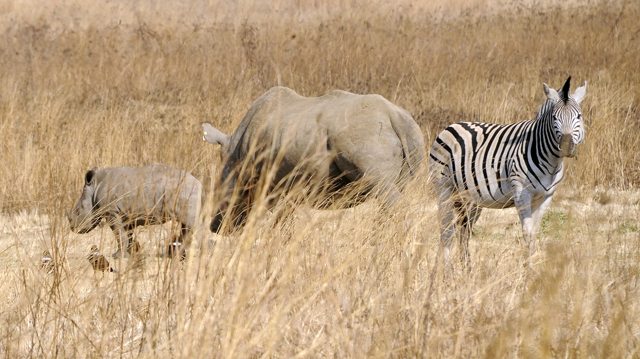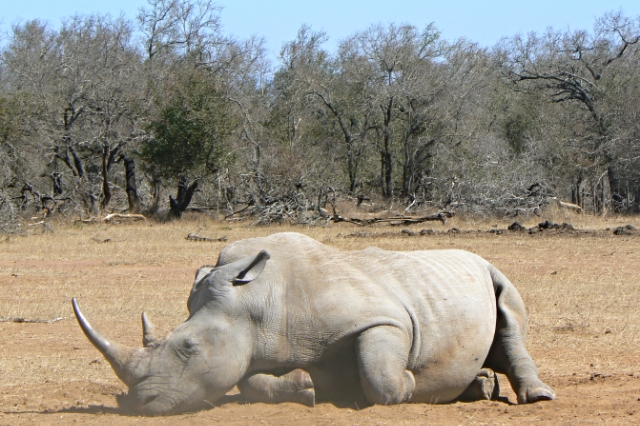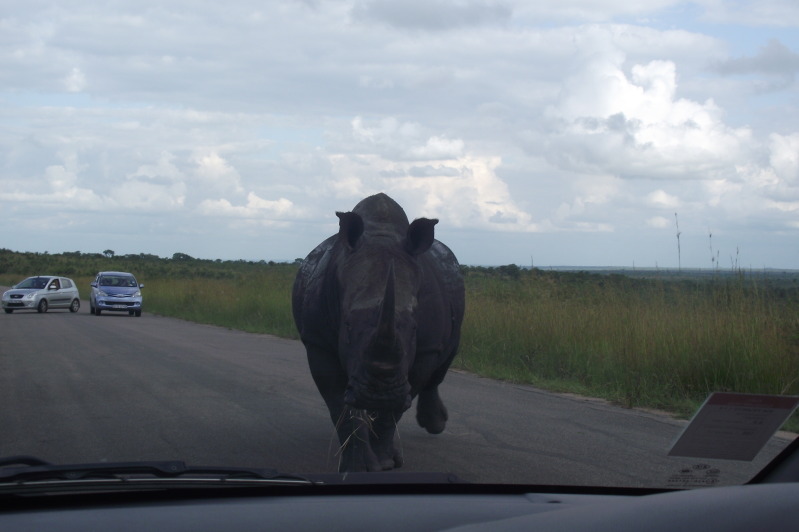Re: World Rhino Day on Africa Wild
Posted: Mon Sep 22, 2014 2:20 pm
1. White rhinos graze on grasses, walking with their enormous heads and squared lips lowered to the ground.
2. Black Rhino usually stand with head held high.
3. A female rhino gives birth to only one calf at a time after a pregnancy of up to 18 month. Smaller species of rhino can develop in as few as 12 months.
4. Black Rhino eat bushes
5. White rhino tend to be more gregarious while Black Rhino are usually solitary.
6. White rhino calf normally runs in front of its mother, with the mother using her horn to direct the calf by tapping it on the rear.
7. Rhinos sleep for around 8 hours a day.
8. Black rhino are susceptible to skin lesions caused by a filaria parasite. When visiting communal dung heaps along their trails, the rhinoceros pass the infection around the population: almost every individual has been infected by a small filariform worm called Stephanofilaria dinniki.
9. The shape of the horn differs between sexes: White Rhino bulls tend to have thicker and shorter horns.
10. Rhinos and oxpeckers share a symbiotic relationship that was once described as mutualistic, but recent research indicates that the relationship is more complex. The two animals are not entirely equal partners, with the relationship tipped in favor of the bird.
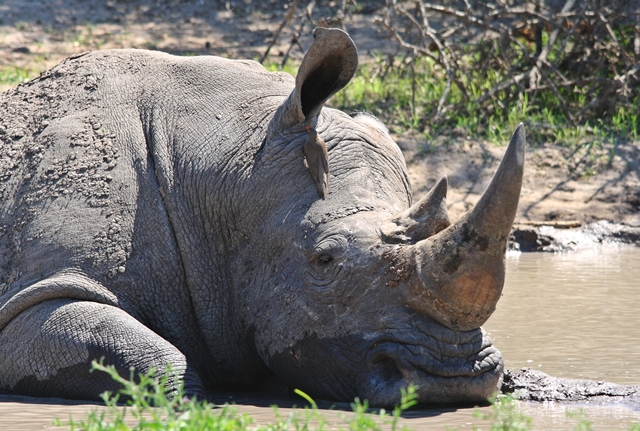
2. Black Rhino usually stand with head held high.
3. A female rhino gives birth to only one calf at a time after a pregnancy of up to 18 month. Smaller species of rhino can develop in as few as 12 months.
4. Black Rhino eat bushes
5. White rhino tend to be more gregarious while Black Rhino are usually solitary.
6. White rhino calf normally runs in front of its mother, with the mother using her horn to direct the calf by tapping it on the rear.
7. Rhinos sleep for around 8 hours a day.
8. Black rhino are susceptible to skin lesions caused by a filaria parasite. When visiting communal dung heaps along their trails, the rhinoceros pass the infection around the population: almost every individual has been infected by a small filariform worm called Stephanofilaria dinniki.
9. The shape of the horn differs between sexes: White Rhino bulls tend to have thicker and shorter horns.
10. Rhinos and oxpeckers share a symbiotic relationship that was once described as mutualistic, but recent research indicates that the relationship is more complex. The two animals are not entirely equal partners, with the relationship tipped in favor of the bird.

